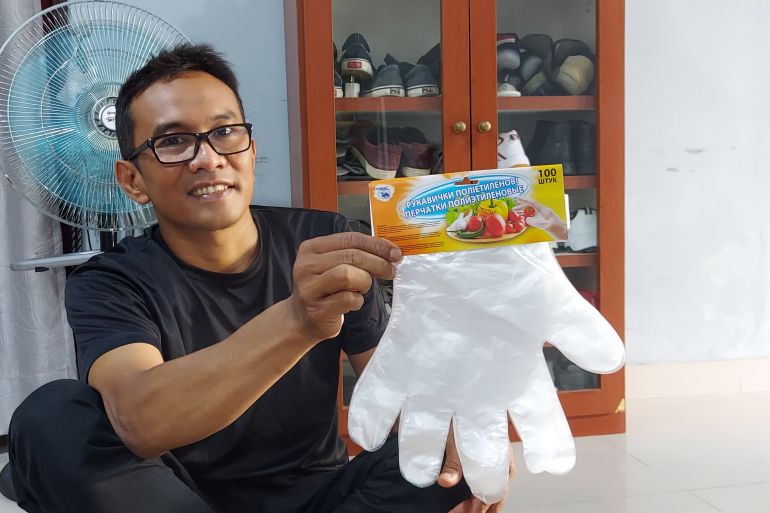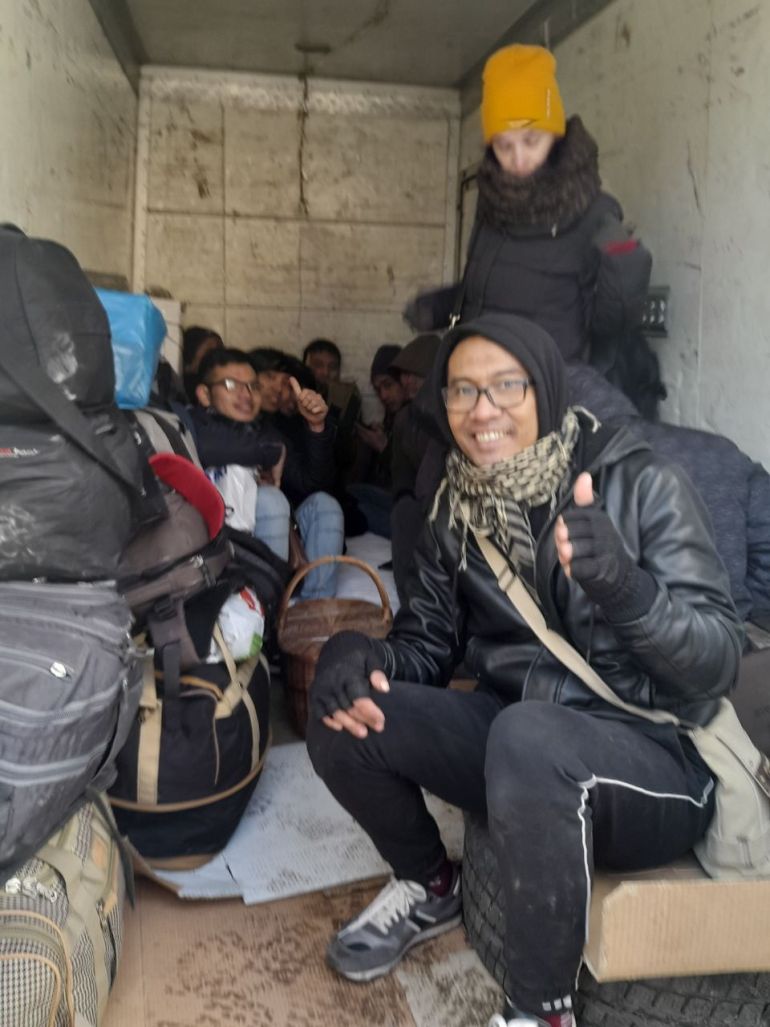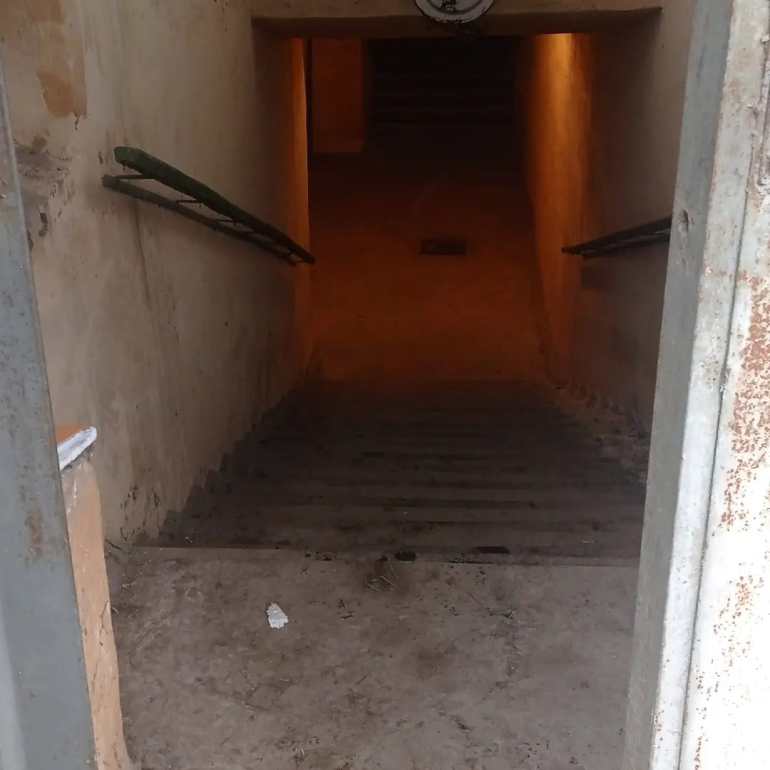Indonesian escapes Chernihiv after hiding in underground bunker
Plastics worker spent three weeks holed up at Chernihiv factory as Indonesian embassy hatched multiple rescue plans.

Binjai, Indonesia – When Iskandar found himself caught in the middle of the Russian invasion of Ukraine at the end of February, the factory worker reckoned he had a 10 percent chance of survival.
“I had just a thin sliver of hope that I would live, of the line between life and death,” the 46-year-old Indonesian, who was working as a quality control officer at a plastic factory when the war started, told Al Jazeera from his home in the city of Binjai in North Sumatra, Indonesia.
Keep reading
list of 4 itemsAnti-war slogans appear on Russian TV before Victory Day parade
Ukrainians fleeing war try different ways to enter the US
‘Fascist murderer’: Russian envoy to Poland doused in red paint
Iskandar, who was based in the northern city of Chernihiv, first found out about the invasion on YouTube on the morning of February 24, when Russian President Vladimir Putin announced a “special military operation” to “demilitarise and de-Nazify” Ukraine.
“Almost as soon as the video was over, the shelling began,” said Iskandar, who had been working in Ukraine since 2017.
The factory’s nine Indonesian workers, their two Nepalese colleagues and the entire Ukrainian staff gathered on the factory floor, wondering what they should do.

“Everyone was ashen and the pressure was palpable. I couldn’t even smile, and we were starting to panic. Our boss told us to turn off the machines. We just huddled there and listened to the sounds of the rockets flying overhead,” the father of four told Al Jazeera.
Unfortunately for Iskandar and the now-trapped factory workers, they had become caught up in what would become known as the Siege of Chernihiv. Strategically important, the city is located north of the Ukrainian capital, Kyiv, and is close to both the Belarusian and Russian borders.
To make matters worse, Iskandar’s 23-year-old son, Aris Wahyudi was with him in Ukraine.
“All the people on the Indonesian team were in their twenties except for me,” he said. “They looked to me for answers about what to do, and I didn’t know what to tell them. Some of them couldn’t even speak, they were so scared.”
Iskandar and the team, who usually made shopping bags and plastic gloves, found they were able to take advantage of the historic infrastructure of the factory.
Every day when he had walked in the factory grounds, Iskandar had noticed a small outbuilding which he had assumed was a disused outdoor toilet. As it turned out, the building was hiding a secret: it was the entrance to an underground bunker and a labyrinth of tunnels beneath the factory floor.
Escape plans
During the second world war, Chernihiv had been under German occupation from 1941 to 1943, and was the site of a Nazi prison. The underground bunker dated from the time of the occupation, and now Iskandar and his colleagues used it to hide from the Russian rockets.
“It was -5C (23 Fahrenheit) underground and we were all wearing three coats each and hats,” he said.
“We slept on wooden palettes which we had made into beds and ate fruit and bread. We had one small heater but it did almost nothing to warm us.”

On the fourth day below ground, a group of Ukrainian troops arrived to rest and recuperate at the bunker, bringing with them a van filled with the bodies of their fallen comrades.
“I could see the feet of one of the dead soldiers sticking out of the van when they opened the doors,” he said. “We decided to move above ground again after that. As more and more soldiers came, I thought the factory was an unsafe place to shelter because we would become a target.”
Thanks to its design, the factory provided plenty of opportunities to hide, and Iskandar and his colleagues moved from one place to another, sleeping in different parts of the main building and staff mess every night.
“The sound of the bombs was so loud every day. But we had a good fate it seems. Maybe it was not yet our destiny to die,” he said.
All the while, as Iskandar contemplated his fate in Chernihiv, his wife, Ayi Rodiah, was trying to make the best of the situation at home in Binjai.
“Of course, I was surprised when the war broke out and my husband was caught in the middle of it,” she told Al Jazeera. “But I thought that if I worried about him dying, it would come true, so I just tried to think positive thoughts.”
The Indonesian embassy in Kyiv desperately tried to get the men to safety, but successive plans ended in failure.
They would receive a phone call from an embassy official telling them to get ready, only for the evacuation to be called off at the last minute because of safety concerns. One day, they got into a van and drove 15 minutes down the road, before turning back.
On March 17, three weeks after the invasion began, Iskandar was finally able to flee, travelling over land from Chernihiv to Kyiv in a van rented by the embassy, and then on to the eastern city of Lviv close to the Polish border.
Later that afternoon, the plastics factory was partially shelled and caught fire.
From Lviv, Iskandar crossed over into Poland, and flew from Warsaw to Jakarta via Doha, before flying to the provincial capital of Medan and then driving to his home in Binjai – a journey of more than 8,000 kilometres (4,971 miles).
In addition to the assistance from the Indonesian embassy, Iskandar said that he was grateful to the Ukrainians who helped him on his journey, sheltering him and driving him to safety, including some of his former colleagues, many of whom have stayed behind and taken up arms in the fight against the Russian army.
“It’s so strange to see the people I used to work with holding guns,” he said. “But they were so kind to me. If it wasn’t for the Ukrainian people, I would never have got home.”